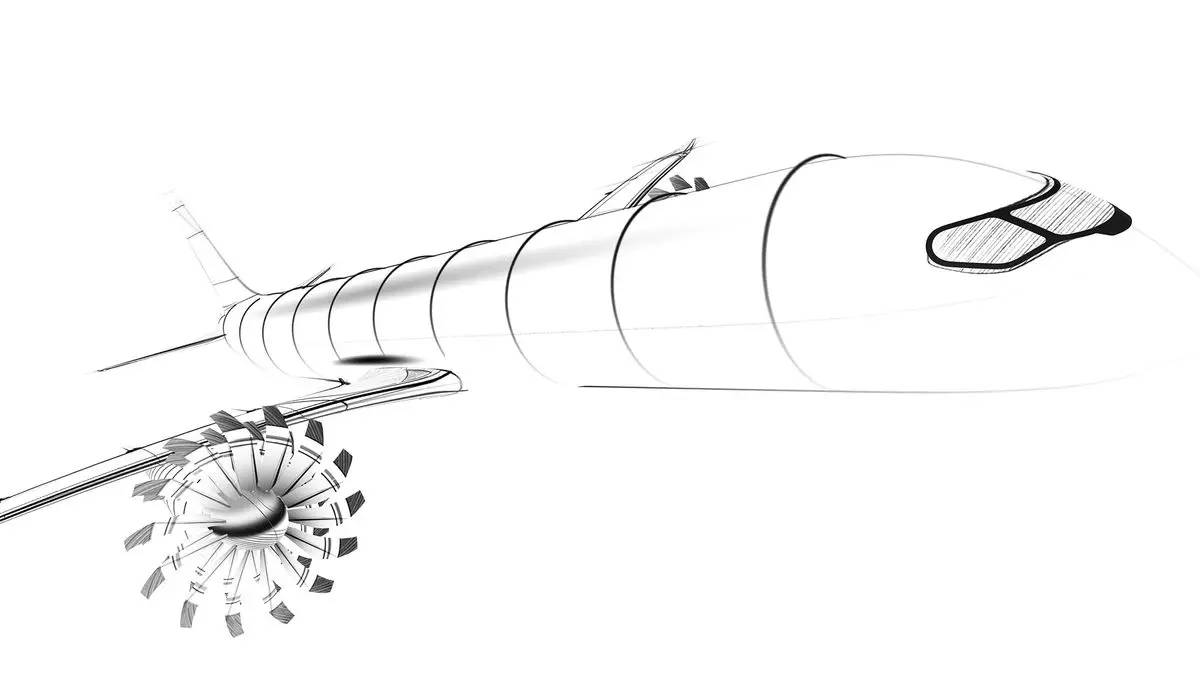As the world grapples with climate change, the aviation industry is under increasing pressure to reinvent itself. Airbus, a prominent player in this field, has unveiled an ambitious goal for the development of a next-generation single-aisle aircraft expected to debut in the latter half of the 2030s. This revolutionary aircraft is projected to achieve a remarkable 20% to 30% increase in fuel efficiency. It embodies not just a commitment to sustainability but a shift toward advanced engineering and innovative technology that could reshape air travel forever.
The essence of this aircraft’s evolution lies in the seamless integration of pioneering engine and wing technologies, alongside significant improvements in fuselage materials. With an eye on reducing emissions, Airbus anticipates making substantial strides by tapping into sustainable aviation fuels in tandem with their high-efficiency design. This dual focus could help the aviation sector meet the ambitious, United Nations-backed target of net-zero emissions by 2050. The challenge is formidable, yet with visionary leadership, it becomes a tangible goal.
The Ingredients for Innovation
At a recent summit in Toulouse, Bruno Fichefeux, leading Airbus’s future programs, articulated a clear vision: while the groundworks are laid, the airline industry is merely at the inception of this transformation. “Today, we are not at the level of the recipe; we are at the level of the ingredients,” he remarked, emphasizing the evolving nature of aerospace technology development.
The focus on engine design stands out as one of the most critical areas for innovation. Airbus proposes an innovative open fan-propulsion system, a significant departure from the conventional enclosed turbofans. CFM International’s Mohamed Ali pointed out the limitations of size within traditional systems; this open design allows for larger fans, which could lead to unprecedented engine performance. By bypassing drag constraints that currently hamstring engine development, the future looks promising for more efficient propulsion systems that could elevate flight to new heights.
Reimagining Wing Design
The wing design is also undergoing a renaissance, with Airbus embarking on progressive experiments with folding wings. Sue Partridge, head of the Wing of Tomorrow program, illuminated a vision inspired by nature’s dynamics, evoking the graceful flight of an albatross. The aerodynamic efficiency of longer, slender wings could drastically reduce drag and enhance lift, yet this ambition encounters logistical challenges at airport gates worldwide, which are ill-equipped for such innovative structures.
In response, Airbus is engineering folding wings that retract during taxiing and parking, thus accommodating existing airport infrastructures while maximizing performance in-flight. This strategic move not only demonstrates engineering ingenuity but also highlights a proactive approach to existing operational realities—an admirable blend of futurism and practicality. Their ongoing testing with wing demonstrators showcases a dedicated pursuit of lighting the path toward an invigorated aerospace industry.
Advancing Fabrication and Hybrid Technologies
Beyond wings and engines, Airbus’s innovations extend deeply into the fuselage’s capabilities. The choice of lighter and stronger materials plays a pivotal role in enhancing fuel efficiency. Combined with aspirations toward battery-powered hybrid-electric propulsion systems, the company aims to cut down carbon emissions significantly, even if such systems might not directly drive the aircraft but enhance various non-flying functions.
In December, their collaborative hybrid-electric demonstration flight with aerospace partners, Safran and Daher, marked a significant milestone. These systems could transform ground movements and internal cabin services, showcasing that sustainability involves not only airborne propulsion but a holistic vision for environmentally friendly air travel.
Looking Ahead
Airbus’s progressive trajectory aligns with an undeniable shift in global priorities towards sustainable practices. Their commitment to revolutionizing aviation through smart engineering and innovative adaptations is not just a response but a proactive stance towards shaping the industry’s future. As stakeholders in this vast ecosystem, it is imperative to keep the momentum moving forward. The success of such endeavors not only shapes the future of air travel but also reinforces the role of the aerospace sector in combating climate change.
In this changing landscape, where the intertwining of technology and sustainability is paramount, Airbus stands as a beacon of possibility, inviting both collaboration and competition. The real test will lie in their ability to translate these visionary concepts into tangible realities—pioneering an era of aviation that is as considerate as it is advanced.


Leave a Reply